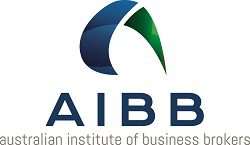How to Sell A Hair Salon Business
Factor to consider when selling your hair salon businessSell A Hair Salon Business
Service-based businesses, including hair salons, are particularly attractive to purchasers. Purchasers want a good location, no competition, an attractive demographic, multiple income streams and reliable profitability. However, you must understand that a buyer will be nervous that the clientele could walk out when the owner does. The more you can do to counter this possibility, the more the salon will be worth.
Preparing your hair salon for sale
- Assets: Identify key assets, both tangible and intangible. List and value your tangible assets such as chairs, washing stations, equipment, furniture, dryers both movable and fixed, grooming equipment, towel racks, hair styling tools, product inventory and licences. Valuation should be the figure at which the assets could be bought in their current state. This is a replacement cost.
- List all intangible assets which include client list, logos, and intellectual property, including business name registration and trademark.
- Financials: Present an overview of historical financial performance and potential future earnings. Provide a document for buyers so that they can analyse cash flow, assets, liabilities and profits at a glance. Be ready to show the purchaser which staff members are responsible for the income in the salon.
- Renters: It is attractive if you have other service providers “renting” a chair or desk. This includes nail artists, beauty practitioners or other hair stylists.
- Lease: The buyer will either take over the lease or seek a new lease from the landlord. As an owner, you need to know whether the landlord is prepared to grant a new lease and under what terms.
- Employees. It is the purchaser’s decision whether to retain current staff. The owner will have to pay any outstanding entitlements owed to the staff member. However, a prudent purchaser will continue the employment of key staff members to ease the transition of ownership and make it more likely the goodwill of the salon comes across.
- Training and Assistance. The buyer usually comes in for a period of time prior to settlement, and the vendor in return stays on after settlement for further assistance. In this period, the buyer is introduced to clients, staff and suppliers. Generally, no money changes hands for this time spent. It is a swap.
- Handover. Be prepared to offer a longer handover of the salon beyond the training and assistance period. This will be where the owner stays on for a wage. percentage of income generated, or by way of a “rent a chair” arrangement.
- A non-compete clause in the contract of sale guarantees the buyer that you will not set up a salon around the corner to compete with the buyer.
- Website: If the website is coming across it will add value.
- Business Name. If you decide to include the salon’s business name in the contract of sale you are required to notify ASIC of the transfer.
- Business Broker. A business broker knows all the above and can present your salon to buyers in the most attractive light.







